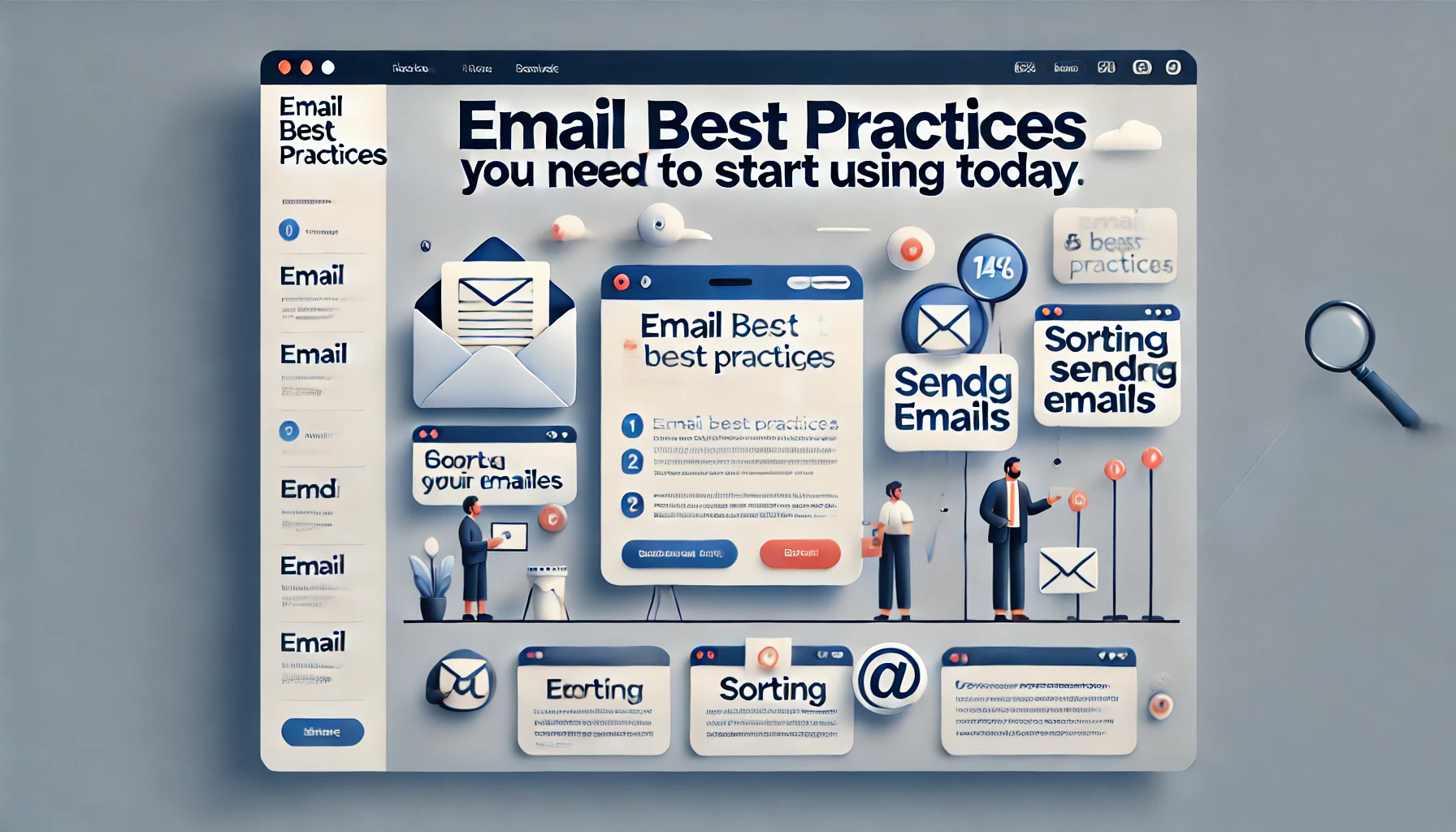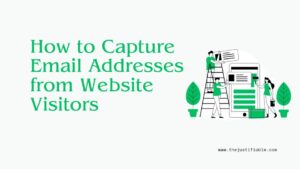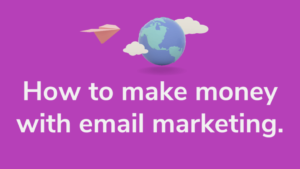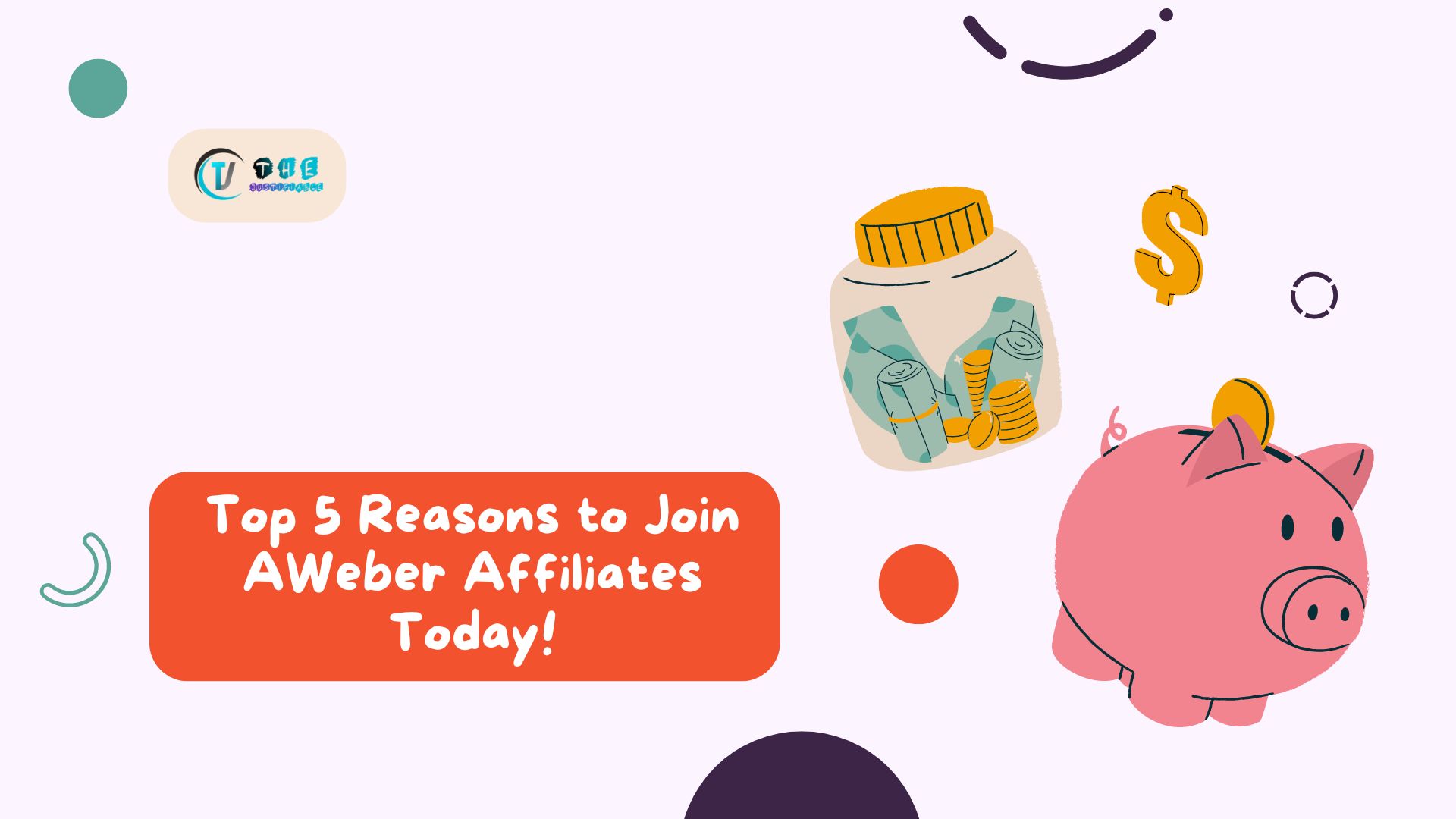Table of Contents
Are your emails truly effective, or are they getting lost in crowded inboxes? Understanding and implementing the right email best practices can make a huge difference in how your messages are received and engaged with.
From ensuring deliverability to crafting compelling subject lines, there are several strategies you can start using today to optimize your email communication. In this article, we’ll dive into actionable email best practices you need to improve your email marketing game.
How To Optimize Email Deliverability And Improve Open Rates
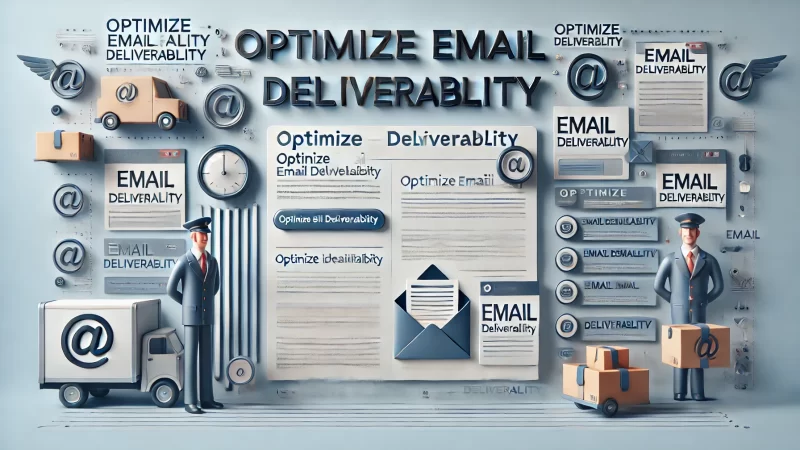
Optimizing email deliverability is essential to ensure your messages reach the inbox instead of being marked as spam. With proper techniques, you can increase the chances of your emails being opened and engaged with by your subscribers. Let’s dive into some key factors.
Understanding Email Deliverability Factors That Impact Success
Email deliverability is all about how well your emails make it into the recipient’s inbox. Factors like IP reputation, domain reputation, and email content quality can affect this. I suggest monitoring your email performance regularly to catch any issues before they escalate.
Sending relevant and valuable content improves engagement, which helps maintain a good sender reputation. The more people interact with your emails, the better your chances of high deliverability. I recommend using engagement data to refine your email lists.
Building a healthy email list through permission-based marketing is vital. Subscribers should actively choose to receive your emails, which will boost your engagement rates and email health. When people voluntarily opt in, they’re more likely to open and engage.
Avoid sending emails to inactive subscribers. I advise regularly cleaning your email list by removing users who haven’t engaged in months. This helps maintain a good sender reputation and keeps deliverability strong.
Why Email Authentication Methods Are Key For Deliverability
Email authentication ensures your emails are trustworthy, reducing the chances of them being marked as spam. I recommend implementing SPF (Sender Policy Framework), DKIM (DomainKeys Identified Mail), and DMARC (Domain-based Message Authentication, Reporting & Conformance) protocols to boost security.
SPF helps verify that emails are coming from authorized servers. If your emails lack this protocol, they might get blocked by spam filters. To protect your reputation, ensure your email server settings align with the SPF protocol.
DKIM adds a digital signature to your emails, proving that they haven’t been tampered with during transit. I suggest configuring DKIM in your email setup to add an extra layer of credibility and boost deliverability rates.
DMARC builds on both SPF and DKIM by giving domain owners control over how their emails are handled. Implementing DMARC helps block unauthorized sources from sending emails under your domain, which strengthens security and improves email trustworthiness.
How To Avoid Spam Filters And Protect Your Sender Reputation
Getting caught in spam filters is a big obstacle to successful email campaigns. To avoid this, focus on writing relevant, non-spammy content. I suggest avoiding excessive exclamation points, all caps, and misleading subject lines.
Maintaining a consistent sending schedule is essential for good deliverability. Sudden spikes in email volume can trigger spam filters. I recommend keeping a regular, predictable sending pattern to build a reliable sender reputation.
Use clean, well-organized HTML in your email design. Complex code or errors in your email’s structure can lead to deliverability issues. I suggest testing your emails before sending to ensure there are no errors that might get flagged by spam filters.
Monitoring your bounce rates is another way to protect your sender reputation. High bounce rates indicate that your emails aren’t reaching valid addresses, which can harm your reputation. I advise removing invalid addresses from your list immediately.
Leveraging Segmentation To Improve Open Rates And Engagement
Segmentation allows you to target specific groups within your email list based on their behaviors, preferences, or demographics. I recommend segmenting your audience to ensure that each email resonates more with the recipient.
Behavioral segmentation is incredibly powerful. By observing how subscribers interact with your emails or website, you can tailor future content to their interests. This will lead to higher open rates and increased engagement.
Using demographic data, such as age, location, or job title, can help you create more personalized emails. I believe that personalized emails create stronger connections with subscribers, making them more likely to open and engage with your content.
Segmenting by purchase history or user journey stage is a great way to nurture leads. I suggest sending targeted offers or content based on where a subscriber is in their buying process, which can drive higher conversions and engagement.
Best Practices For Crafting Compelling Email Subject Lines
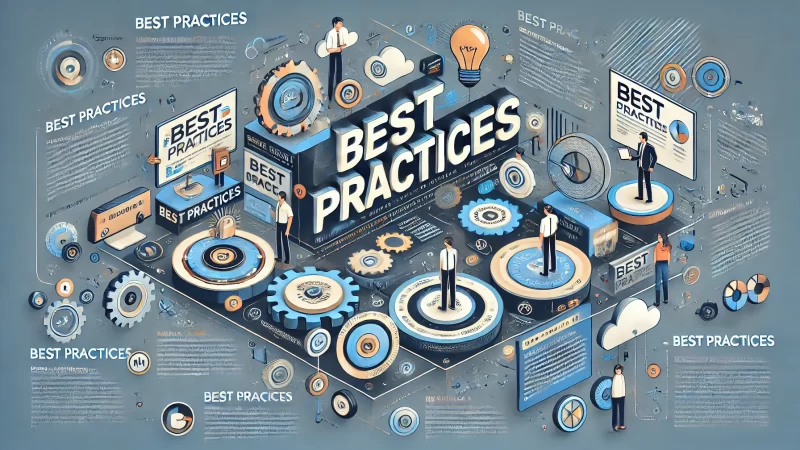
A great email subject line is crucial for grabbing attention and encouraging recipients to open your email. The right mix of creativity and clarity can significantly boost your open rates, ensuring your email gets read rather than ignored.
How To Write Attention-Grabbing Subject Lines With A/B Testing
A/B testing is one of the best ways to figure out what kind of subject lines work best with your audience. I suggest testing different styles, like using questions, humor, or urgency, to see what drives higher open rates.
When A/B testing subject lines, focus on small tweaks. Test changes like length, tone, or specific words. I advise testing one element at a time to pinpoint exactly what works best for your audience.
Monitor the results closely. I recommend tracking open rates and engagement levels to understand which subject lines are most effective. Use this data to improve future email campaigns for better performance.
Consistency in testing is key. I suggest conducting A/B tests regularly as preferences may change over time. What works today might not work next month, so keep refining your approach based on real-time data.
Using Power Words And Personalization For Better Subject Lines
Power words evoke strong emotions and can make your subject lines more compelling. I suggest incorporating words like “exclusive,” “limited,” or “free” to create a sense of urgency or excitement that draws readers in.
Personalization in subject lines is highly effective. Using the recipient’s name or referring to their past actions can make the email feel more relevant. I believe personalized subject lines make recipients feel valued, increasing their likelihood of opening.
Don’t overdo personalization. While using the recipient’s name can be impactful, I recommend balancing personalization with clarity. Focus on delivering value in the subject line to ensure recipients know what to expect inside the email.
Avoid cliches and tired phrases. I advise steering clear of overused words like “urgent” or “act now” unless they genuinely apply to the content. Keeping subject lines fresh and unique helps build trust with your audience.
Why Clear And Concise Subject Lines Boost Email Open Rates
Clear subject lines that get straight to the point tend to perform better than vague or overly clever ones. I recommend writing subject lines that immediately convey the value of the email to encourage opens.
Concise subject lines are easier to read, especially on mobile devices. I suggest keeping your subject lines under 60 characters to ensure they don’t get cut off. Short and sweet wins the race when it comes to email open rates.
Transparency in your subject line builds trust. I advise making sure the subject line aligns with the content of the email. This way, recipients know exactly what they’re getting and are more likely to open future emails.
Avoid filler words or unnecessary phrases. I believe that cutting out fluff from your subject lines not only improves clarity but also makes your email feel more professional and direct, which can lead to better engagement.
How To Avoid Clickbait And Build Trust With Your Audience
Clickbait subject lines might get you short-term opens, but they harm long-term trust. I recommend staying truthful in your subject lines to build a loyal subscriber base that values your content.
Misleading subject lines can lead to high unsubscribe rates. I advise against using sensationalism or promises you can’t keep. Instead, focus on delivering real value that matches your subject line, which builds credibility over time.
Building trust with your audience is more important than a single high open rate. I suggest using subject lines that accurately reflect the email’s content and gradually fostering a relationship of transparency and value with your subscribers.
Focus on consistency. If your audience knows they can trust your subject lines to deliver what they promise, they’ll be more likely to open future emails. I believe consistency in quality builds a strong foundation for long-term engagement.
Effective Email Content Strategies To Drive Engagement
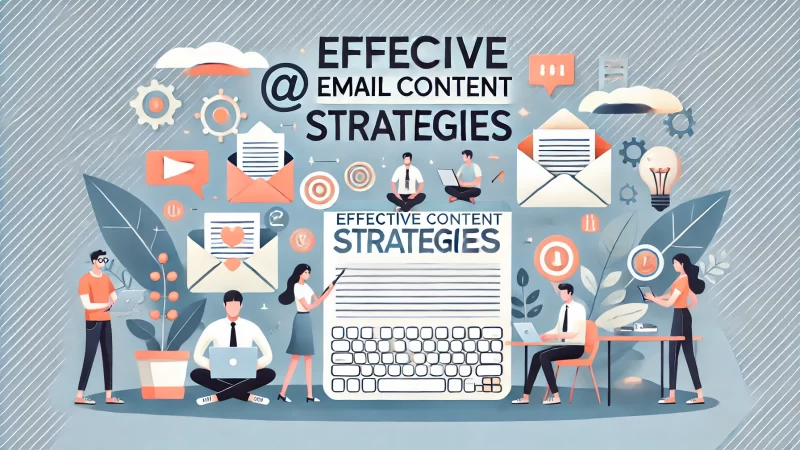
Crafting effective email content is essential for keeping your audience engaged and encouraging interaction. By focusing on persuasive writing, clear structure, and compelling visuals, you can significantly increase email engagement and drive better results.
How To Write Persuasive Email Copy That Resonates With Readers
Writing email copy that connects with readers requires understanding their needs and offering valuable solutions. I suggest focusing on benefits over features, ensuring your message speaks directly to your audience’s pain points and aspirations.
Personalizing the language in your emails can create a sense of connection. Use words like “you” to make the reader feel like the email was written just for them. This approach helps increase engagement because it feels more relatable and relevant.
Keeping the tone conversational is key to building rapport. I recommend avoiding jargon and technical terms unless necessary. Make the content easy to understand so that it resonates with readers of all backgrounds, making them more likely to take action.
Using stories or real-life examples can make your email copy more engaging. I advise incorporating short anecdotes that illustrate the value of your product or service, as storytelling often helps persuade readers more effectively than straightforward facts.
Structuring Emails For Better Readability And Engagement
A well-structured email improves readability, making it easier for subscribers to absorb your message. I recommend using short paragraphs, bullet points, and plenty of white space to break up text and enhance readability.
Headings and subheadings help guide the reader through the content. I suggest using descriptive headings that summarize each section clearly, so even if someone skims, they can still grasp the main points of the email.
Keep sentences short and impactful. I believe that concise sentences prevent readers from losing interest and make the content feel more dynamic. Aim for clarity over complexity to maintain your audience’s attention from start to finish.
Using consistent formatting helps with readability too. I advise bolding important text, using hyperlinks for additional information, and maintaining a clean, visually appealing layout. This keeps the content structured and encourages the reader to take action.
Using Visuals And CTAs To Encourage Email Interaction
Visuals can significantly boost engagement by making emails more interesting and easier to digest. I suggest incorporating relevant images, infographics, or even videos to break up text and offer more visual appeal.
Clear calls-to-action (CTAs) are critical for driving engagement. I recommend placing a prominent CTA button that stands out and clearly tells the reader what you want them to do, such as “Shop Now,” “Sign Up,” or “Learn More.”
Experimenting with CTA placement can impact engagement levels. I suggest trying different locations within the email, such as at the top, middle, or end, to see what works best. Multiple CTAs placed strategically can guide the reader throughout the email.
Ensure that the visuals and CTAs complement each other. I advise designing CTA buttons with contrasting colors so they’re easy to spot, but make sure the colors align with your brand. This approach encourages more clicks and interaction.
Why Mobile Optimization Is Essential For Modern Email Campaigns
With the majority of users reading emails on mobile devices, mobile optimization is a must. I recommend using responsive design to ensure your emails look great on any screen size, whether desktop or mobile.
Single-column layouts tend to perform better on mobile devices. I advise keeping your design simple and avoiding side-by-side elements that could become difficult to read on smaller screens. This ensures that your content is easily accessible.
Optimizing load times is crucial for mobile email engagement. I suggest minimizing the use of large images and heavy files that could slow down the email’s load time on mobile networks. Quick-loading emails lead to better reader retention.
Ensuring that your CTAs are mobile-friendly is just as important. I recommend using large, tappable buttons that are easy for users to click with their fingers, as this can greatly improve interaction rates on mobile devices.
Why Segmentation And Personalization Are Essential For Success

Segmentation and personalization allow you to target your audience more effectively, ensuring that each recipient receives content tailored to their preferences and behaviors. This strategy improves engagement, as people are more likely to interact with content that feels relevant to them.
How To Use Behavioral Data To Improve Email Segmentation
Behavioral data provides insights into how subscribers interact with your emails or website. I suggest using this data to segment your audience, so you can send emails that match their specific interests, making your campaigns more effective.
Tracking behavior, such as clicks, purchases, or website visits, gives you a deeper understanding of each subscriber’s preferences. I recommend segmenting based on actions taken, which allows for more relevant content and increased engagement.
Use purchase history or browsing patterns to refine your email segmentation. I believe this kind of targeted approach helps you deliver highly relevant product recommendations, which encourages further interaction and loyalty from your audience.
Automated triggers based on behavior can enhance segmentation. I advise setting up triggers, like sending a follow-up email after someone abandons their cart, which makes the email feel timely and relevant, increasing the likelihood of engagement.
Personalizing Emails Based On User Preferences And Actions
Personalization goes beyond just using the recipient’s name—it’s about delivering content that aligns with their specific needs. I suggest personalizing emails based on their past actions or preferences to make your communication more meaningful.
Customizing product recommendations based on browsing history can significantly improve engagement. I advise using dynamic content blocks that update based on the individual’s actions, ensuring the email always feels fresh and personalized.
Leverage data from user profiles or surveys to tailor your messaging. I recommend gathering as much information as possible through sign-up forms or quizzes to better understand what content resonates with each user.
Personalization helps build relationships. I believe that when recipients receive emails that reflect their preferences, they feel understood, which fosters trust and encourages long-term loyalty to your brand.
How Dynamic Content Helps Tailor Emails To Specific Audiences
Dynamic content allows you to show different content to different segments within the same email. I suggest using this strategy to display personalized messages, products, or offers based on the subscriber’s preferences or behavior.
Dynamic content can automatically adjust to include personalized greetings or recommendations. I recommend leveraging dynamic blocks to keep your emails relevant, such as suggesting products that match the recipient’s past purchases or interests.
This approach also allows for real-time customization. I advise using dynamic content to update based on current user activity, such as showing location-based promotions or timely offers, which makes the email feel more immediate and personalized.
Dynamic content boosts engagement because it ensures each subscriber sees information that’s relevant to them. I suggest regularly updating your dynamic content rules to keep the experience personalized and timely for each campaign.
Increasing Engagement With Targeted Email Campaigns
Targeted campaigns focus on delivering specific messages to distinct groups within your audience. I recommend tailoring your campaigns based on segmentation, so you can address the needs and interests of each subscriber more effectively.
Creating separate campaigns for different buyer personas helps maintain relevance. I advise crafting email series that speak to the unique challenges or desires of each persona, which helps deepen engagement over time.
Use targeted campaigns to nurture leads. I suggest sending content based on the subscriber’s position in the sales funnel, ensuring they receive the right information at the right time to keep them moving toward conversion.
Targeted campaigns can re-engage inactive subscribers. I recommend setting up re-engagement emails for those who haven’t interacted with your brand recently, offering special discounts or content that reignites their interest.
Timing And Frequency: Key Factors In Email Campaign Success

Timing and frequency are crucial elements in the success of any email campaign. Sending the right message at the right time—and at the right intervals—can significantly improve engagement and minimize unsubscribes.
How To Determine The Optimal Time To Send Emails For Better Results
Finding the best time to send emails can increase open rates and engagement. I recommend experimenting with different days and times to see when your audience is most responsive, then using that data to guide future sends.
Analyze past email performance to identify patterns. I suggest looking at when your most successful emails were sent to determine the times that yield the best results, then sticking to that schedule for consistency.
Time zones matter when sending global emails. I advise scheduling emails to accommodate the recipient’s local time, ensuring they receive the message during peak engagement hours. This makes it more likely they’ll interact with your content.
Consider the nature of your content when choosing send times. For example, I recommend sending promotional emails during business hours but saving newsletters for mornings or weekends when readers may have more time to engage.
How To Manage Email Frequency Without Overwhelming Subscribers
Balancing email frequency is key to maintaining subscriber interest without causing fatigue. I suggest sending emails often enough to stay top-of-mind but not so frequently that it leads to unsubscribes.
Monitor engagement metrics to gauge whether you’re sending too many emails. I recommend keeping an eye on unsubscribe rates or decreased open rates as indicators that you might be overloading your subscribers with content.
Segmenting your list by engagement level can help manage frequency. I suggest sending more frequent emails to highly engaged subscribers while reducing the frequency for less active recipients to avoid overwhelming them.
Testing different frequencies can help you find the sweet spot. I advise experimenting with varied sending schedules and asking subscribers for their preferences to ensure they’re receiving the ideal amount of content.
Why Testing And Analytics Are Important For Timing Optimization
A/B testing helps determine the best timing for your emails. I suggest testing different send times for the same email to see which one drives higher open and click-through rates, allowing you to refine your timing strategy.
Analyzing email metrics is key to understanding audience behavior. I recommend tracking data like open rates, click-through rates, and conversion rates to get a clear picture of when your audience is most engaged.
Using testing tools helps optimize your campaigns. I believe that regularly testing send times and frequencies ensures your strategy evolves with your audience’s behavior, keeping your campaigns fresh and relevant.
Timing can also depend on the type of content you’re sending. I suggest testing different times for various types of emails, like promotions, newsletters, or updates, to see which schedule works best for each content category.
How To Identify Peak Engagement Times Using Email Metrics
Tracking engagement metrics can help you identify the best times to send your emails. I recommend using tools that analyze when your emails receive the most opens, clicks, and interactions to refine your timing strategy.
Peak engagement times may vary depending on your industry. I advise researching industry benchmarks and comparing them with your own data to find the optimal sending window for your specific audience.
Monitoring recipient behavior over time is essential. I suggest regularly reviewing metrics to see if engagement times shift, as people’s habits may change seasonally or due to other external factors.
Use real-time analytics to adjust timing strategies. I believe that taking a proactive approach to monitoring email performance allows you to make quick adjustments, ensuring your emails reach subscribers at the most opportune moments.
How To Create Engaging Email Call-To-Actions (CTAs)
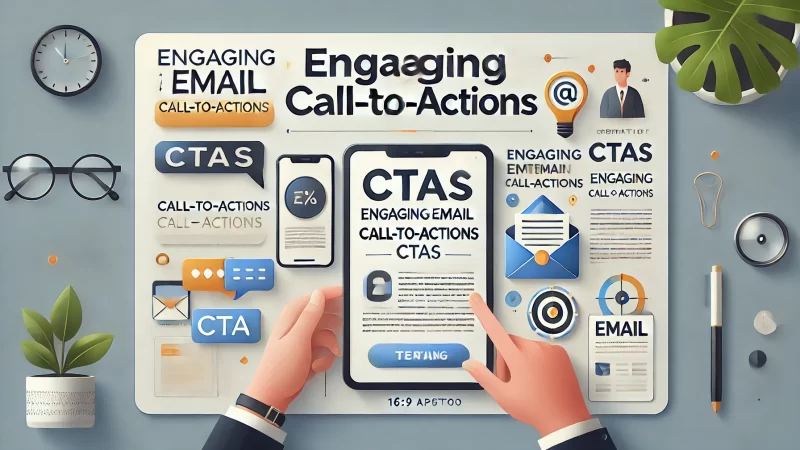
Creating an engaging email CTA (call-to-action) is crucial for driving conversions. It prompts your readers to take the next step, whether it’s clicking a link, making a purchase, or signing up for a service. Let’s explore how to craft the most effective CTAs.
Best Practices For Writing Persuasive CTAs That Convert
A persuasive CTA uses clear, action-oriented language that leaves no doubt about what the reader should do. I recommend being direct, using phrases like “Get Started Now” or “Claim Your Offer,” so readers know exactly what action to take.
Incorporating urgency can boost your CTA’s effectiveness. I suggest using words like “limited-time” or “exclusive” to encourage immediate action. People are more likely to click when they feel they might miss out on a valuable offer.
Using benefit-driven language is key to making your CTA appealing. Rather than just “Learn More,” I advise adding a benefit, such as “Learn How to Boost Your Sales Today.” This adds value and gives readers a reason to engage.
Keep CTAs short and to the point. I believe that concise CTAs work best because they don’t overwhelm the reader. Simple, clear phrases are more likely to get clicked than longer, complex calls-to-action.
How To Use Button Design And Placement To Increase Clicks
The design and placement of your CTA button can make a big difference in click-through rates. I recommend using a contrasting color that stands out from the rest of the email, ensuring the button catches the reader’s eye immediately.
Positioning the CTA above the fold is another effective strategy. I suggest placing it where readers can see it without scrolling too far. This way, you grab their attention early, increasing the chances of interaction.
The size of the button matters too. I advise making it large enough to be easily clickable but not so big that it feels overwhelming. Readers should feel naturally drawn to click without being pushed too aggressively.
Using white space around the CTA button helps draw attention. I recommend giving the button some breathing room, which makes it stand out from the rest of the content and focuses the reader’s attention on taking action.
Why Testing Different CTA Variations Is Crucial For Success
Testing different versions of your CTA can help you find what works best for your audience. I suggest running A/B tests, experimenting with different colors, wording, and placement to see which variations lead to more clicks.
Changing the language slightly can have a significant impact. I advise testing different verbs or phrasing, like “Sign Up Today” versus “Join Now,” to see what resonates better with your audience. Subtle tweaks often lead to better results.
You can also test visual elements, such as button shape or size. I suggest experimenting with rounded corners versus sharp ones or increasing the button’s size slightly to see how it affects click-through rates.
Timing and context matter too. I recommend testing when and how often you include CTAs in your emails, ensuring they don’t come across as too frequent or intrusive. Striking the right balance keeps your audience engaged without feeling pressured.
How To Align CTAs With Your Email Campaign Goals
Your CTA should always align with the overall goals of your email campaign. I suggest crafting your CTA based on what you want the reader to do, whether that’s signing up for a webinar, making a purchase, or downloading a resource.
Consider the user journey when writing your CTA. I advise making sure the CTA reflects where your subscriber is in the sales funnel. For example, early-stage leads might benefit from “Learn More” CTAs, while those closer to conversion need “Buy Now.”
Ensure the CTA leads to a relevant landing page. I recommend verifying that the action aligns with the email’s content, so the transition feels seamless. Mismatched CTAs can confuse readers and reduce trust.
Multiple CTAs should guide users to different, but related, actions. I suggest offering secondary CTAs like “Read Our Blog” or “Follow Us on Social Media” to engage readers who might not be ready to convert right away, keeping them connected with your brand.
How To Maintain Clean Email Lists For Better Performance
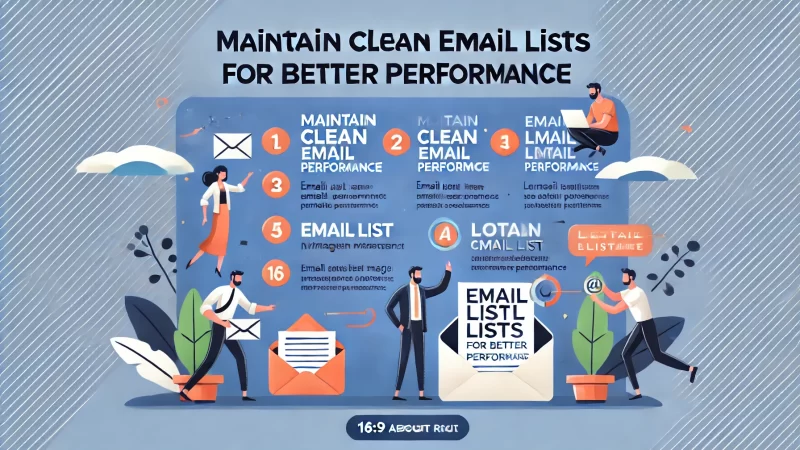
Maintaining a clean email list is critical for ensuring high deliverability rates and boosting overall campaign performance. A clean list improves engagement metrics and reduces the chances of your emails being flagged as spam.
The Importance Of Regularly Cleaning And Updating Email Lists
Regularly cleaning your email list helps maintain a healthy sender reputation and increases deliverability. I recommend removing inactive subscribers or those who never engage with your content, as this keeps your list fresh and responsive.
Email hygiene can prevent deliverability issues. I suggest routinely checking your list for hard bounces and invalid addresses. Keeping these off your list prevents emails from being marked as undeliverable, which can hurt your sender reputation.
Updating preferences for engaged subscribers is equally important. I advise sending occasional preference emails asking subscribers to update their email preferences, ensuring you’re sending content that matches their interests.
Cleaning your list can also lead to cost savings. I believe that regularly removing inactive users reduces the number of emails sent, which can lower your email service provider costs, making your campaigns more efficient.
How To Identify And Remove Inactive Or Invalid Email Addresses
Identifying inactive subscribers is essential for maintaining engagement. I recommend tracking email open rates and click-through data to pinpoint which users haven’t interacted with your content in a long time.
Using email validation tools helps ensure addresses are valid. I advise running your list through an email verification service to catch invalid addresses before sending. This reduces bounce rates and improves overall email health.
For users who haven’t engaged in months, I suggest running a re-engagement campaign. Offering a special incentive or asking if they still want to receive your emails can either bring them back or help you identify who to remove.
Monitoring engagement metrics is crucial to this process. I recommend keeping an eye on your bounce and unsubscribe rates to determine when it’s time to clean your list. Regular updates can prevent future deliverability issues.
Why Double Opt-In Is Crucial For A Healthy Email List
Double opt-in ensures that only genuinely interested subscribers are added to your list. I recommend implementing this method, where users confirm their subscription through an email, to reduce spam complaints and boost list quality.
Double opt-in reduces the risk of fake or mistyped email addresses. I suggest using it to prevent invalid contacts from cluttering your list, which can damage deliverability and engagement metrics over time.
Subscribers added through double opt-in tend to be more engaged. I believe this method helps you build a stronger relationship with your audience, as those who take the time to confirm their subscription are more likely to interact with your content.
It also offers legal protection. I advise using double opt-in to comply with regulations like GDPR, which require clear consent before adding users to your email list. This helps avoid potential legal issues and ensures trust with subscribers.
How To Re-Engage Dormant Subscribers Before Removing Them
Re-engaging inactive subscribers before removing them gives you a chance to win them back. I suggest creating a specific re-engagement email series offering exclusive discounts, valuable content, or asking them to update their preferences.
Use subject lines that catch their attention. I recommend phrases like “We Miss You” or “Exclusive Offer for You” to reignite interest. These subject lines can help bring dormant subscribers back into the fold.
Personalization in your re-engagement emails is essential. I believe mentioning their name, past behavior, or purchase history can make these emails feel more relevant, increasing the likelihood that they’ll re-engage with your brand.
Offer clear, easy-to-understand options for subscribers who might want to reduce email frequency rather than unsubscribe. I suggest giving them the choice to receive fewer emails or only certain types of content, helping retain subscribers who may still have interest.
Why Automation Is Key For Efficient Email Marketing
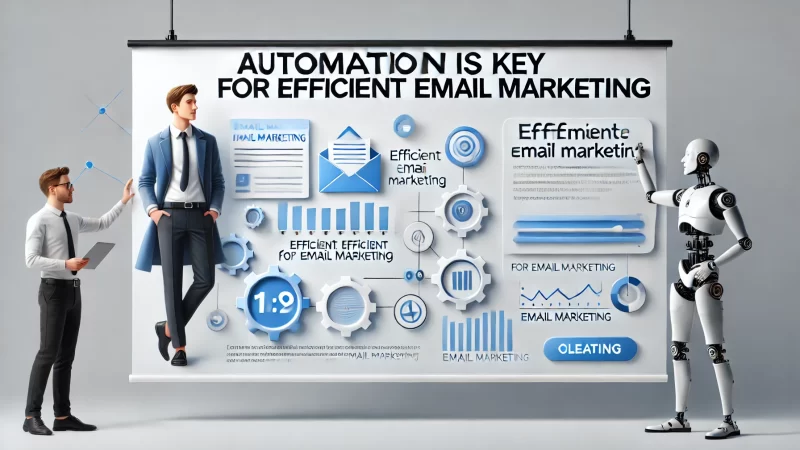
Automation simplifies email marketing, making it more efficient and scalable. By automating tasks like sending follow-ups, segmenting lists, and tracking performance, you can free up valuable time while improving engagement and conversions in your email campaigns.
How To Use Email Automation To Save Time And Improve Efficiency
Email automation helps streamline repetitive tasks, such as sending welcome emails or following up with leads. I recommend setting up workflows that automatically respond to user actions, which ensures timely communication without constant manual intervention.
Automation also ensures consistency in your campaigns. I suggest creating a schedule where emails are triggered by specific events or behaviors, like a purchase or a form submission, so that your messaging stays relevant and prompt.
You can save time by automating segmentation based on user behavior. I believe that automatically organizing subscribers into lists according to their interactions or preferences can help you target specific audiences more effectively.
Automation allows you to scale your campaigns without increasing your workload. I recommend using email automation tools to handle larger subscriber lists, ensuring that each person receives personalized content, even as your list grows.
Leveraging Triggered Emails To Increase User Engagement
Triggered emails respond to user behavior in real-time, making them highly effective for engagement. I suggest setting up triggers for key actions like sign-ups, purchases, or cart abandonments, so your emails reach users when they’re most likely to respond.
One of the most effective triggers is a welcome email. I recommend sending an immediate, personalized email to new subscribers, welcoming them and offering helpful resources. This initial interaction builds rapport and encourages further engagement.
Cart abandonment emails can also drive conversions. I advise creating a sequence of follow-up emails reminding users of their abandoned carts, possibly including a special offer, which can incentivize them to complete their purchase.
Behavioral triggers based on user activity, like visiting a product page multiple times, can help drive interest. I suggest using these triggers to send relevant content, such as product recommendations or special offers, tailored to each user’s interests.
Why Automated Drip Campaigns Can Boost Lead Nurturing
Drip campaigns deliver a series of emails to nurture leads over time. I recommend using drip emails to guide prospects through the customer journey, offering valuable information or tips that gradually build interest in your product or service.
Drip emails keep your brand top-of-mind without being too intrusive. I suggest setting up a sequence that starts with educational content and slowly introduces more promotional messaging, ensuring your leads receive value at every step.
Automating drip campaigns can also help you send personalized content. I believe segmenting your list and tailoring each drip series based on user behavior or preferences can significantly improve engagement and drive better results.
Drip campaigns are effective because they align with the buyer’s journey. I suggest adjusting the content of each email in the series to match the lead’s current stage—whether they’re just learning about your brand or ready to make a purchase.
How To Track Automation Performance And Make Data-Driven Adjustments
Tracking performance is essential to ensuring your automated campaigns are effective. I recommend closely monitoring key metrics like open rates, click-through rates, and conversions to identify areas where your automation could be improved.
A/B testing is a great way to refine your automated workflows. I suggest testing different subject lines, email formats, or send times to see which variations perform best. This allows you to optimize your automation for better engagement.
Look for drop-off points in your automation sequences. I advise checking where users stop engaging with your emails and adjusting the content or timing of those emails to better capture their attention.
Using data from automated campaigns helps you make informed decisions. I recommend reviewing performance reports regularly and using that data to tweak your strategies, ensuring your automation consistently delivers results.
Measuring Email Campaign Success With The Right Metrics
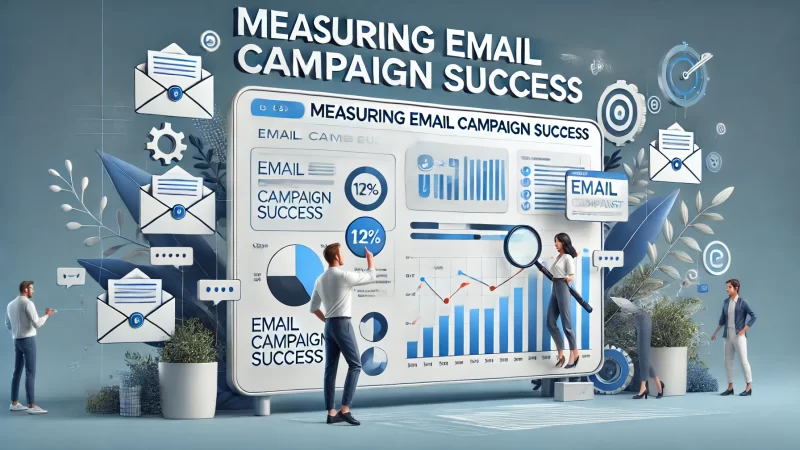
Tracking the right metrics is crucial for understanding the effectiveness of your email campaigns. By monitoring specific data points, you can gain valuable insights into what’s working, where improvements are needed, and how to enhance your email marketing efforts.
Key Metrics To Track For Email Marketing Success
Several metrics provide a clear picture of email performance. I recommend focusing on open rates, click-through rates, and conversion rates, as these are the most telling indicators of whether your emails are resonating with your audience.
Open rates show how many recipients are opening your emails. I suggest tracking this metric to determine whether your subject lines and sending times are effective, helping you refine your strategy for better results.
Click-through rates measure how many people click links within your emails. I believe this is a critical metric to assess engagement, as higher click-through rates typically indicate that your content is relevant and compelling.
Conversion rates are perhaps the most important metric. I advise tracking how many email recipients take the desired action, whether it’s making a purchase or signing up for a webinar, as this directly reflects the effectiveness of your email campaigns.
How To Analyze Open Rates, Click-Through Rates, And Conversions
Analyzing these metrics helps you understand the strengths and weaknesses of your campaigns. I recommend breaking down open rates to see which subject lines or send times drive the most engagement, giving you insights for future emails.
For click-through rates, I suggest analyzing which links are receiving the most clicks. This will show you what content resonates with your audience, helping you focus on the topics or offers that lead to the highest engagement.
Conversion analysis is key to measuring ROI. I advise looking at how many email recipients complete your call to action and identifying patterns, such as which types of emails or offers are most effective in driving conversions.
Comparing these metrics across different campaigns can provide valuable insights. I believe tracking trends over time helps you refine your strategy, identifying what works best and where there’s room for improvement in your email marketing.
Why Bounce Rates And Unsubscribe Rates Matter
Bounce rates measure how many emails fail to reach their recipients. I suggest tracking both hard and soft bounces, as high bounce rates can indicate list quality issues that need to be addressed to maintain good deliverability.
Unsubscribe rates show how many recipients are opting out of your emails. I believe it’s important to monitor this metric, as a spike in unsubscribes may indicate that your content is no longer relevant or engaging to your audience.
High bounce rates can damage your sender reputation. I recommend removing invalid or inactive email addresses regularly to keep your list healthy and improve your overall deliverability.
A small number of unsubscribes is normal, but I suggest looking for trends. If unsubscribe rates start increasing, it may be time to reevaluate your content strategy, ensuring that you’re consistently providing value to your subscribers.
Using Data To Refine And Improve Future Email Campaigns
Data from past campaigns is invaluable for improving future efforts. I suggest using insights from key metrics like open rates and conversions to shape your next campaigns, ensuring they are more targeted and effective.
A/B testing based on past performance can help you refine your content. I recommend testing different variables—like email design, CTA placement, or subject lines—based on what has worked or not worked in previous campaigns.
Segmenting your audience using data is a powerful way to improve results. I advise analyzing the behavior of different subscriber groups and sending them more personalized, relevant emails to increase engagement and conversions.
Continual refinement is key to success. I believe that regularly reviewing and acting on campaign data allows you to stay flexible and adapt to your audience’s changing needs, improving the effectiveness of your email marketing over time.
Ensuring Compliance With Email Marketing Laws And Regulations
Compliance with email marketing laws is essential to maintaining trust and avoiding legal issues. Ensuring that your campaigns meet the necessary regulatory standards can help protect your reputation and build stronger relationships with your audience.
Why GDPR And CAN-SPAM Are Critical For Email Marketing Compliance
GDPR and CAN-SPAM regulations protect user privacy and prevent spam. I recommend familiarizing yourself with these laws, as failing to comply can lead to fines or damage to your reputation, which can negatively impact your email marketing efforts.
GDPR requires explicit consent from EU subscribers. I advise ensuring that your opt-in forms are clear and that subscribers knowingly agree to receive your emails, which helps you stay compliant and avoid penalties.
CAN-SPAM focuses on U.S. email recipients and requires that emails include an opt-out mechanism. I suggest reviewing your email footer to ensure there’s an easy way for recipients to unsubscribe, keeping you compliant and user-friendly.
Compliance with these regulations builds trust with your audience. I believe that when subscribers know their privacy is respected, they’re more likely to engage with your content and stay subscribed to your emails.
How To Build Trust By Including Clear Opt-Out Mechanisms
Providing an easy way to unsubscribe is not only a legal requirement but also helps build trust with your audience. I recommend placing a clear, visible unsubscribe link in every email, making it simple for users to manage their preferences.
Giving subscribers control over the frequency or type of emails they receive can reduce unsubscribes. I suggest offering a preference center where users can choose the content they want to receive, which helps maintain engagement.
Transparency is key to building trust. I advise being upfront about what subscribers can expect from your emails, whether it’s weekly newsletters or occasional promotions. This transparency can reduce frustration and build a loyal subscriber base.
Respecting opt-out requests promptly is critical. I believe that processing unsubscribes immediately not only ensures compliance but also shows respect for your audience’s preferences, which can improve your brand’s reputation.
Why Data Privacy Is Essential For Maintaining Subscriber Trust
Protecting subscriber data is essential for building long-term trust. I recommend implementing strict data security measures to ensure that personal information, like email addresses, is kept safe and used only for its intended purpose.
Clearly communicating your privacy policy helps foster transparency. I suggest including a link to your privacy policy in every email, so subscribers understand how their data is used and what protections are in place.
Encrypting email lists and securing data storage systems can help prevent breaches. I believe that showing your audience that you take data privacy seriously strengthens their trust in your brand, leading to higher engagement.
Regularly auditing your data handling practices ensures ongoing compliance. I advise reviewing your processes to make sure they align with current privacy regulations and that subscriber information is handled securely.
Ensuring Your Email Practices Align With Legal Requirements
Aligning your email marketing practices with legal requirements is essential to maintaining compliance. I recommend regularly reviewing GDPR and CAN-SPAM guidelines to ensure your campaigns meet the necessary standards.
Always obtain clear, affirmative consent from subscribers. I advise using double opt-in methods where possible to ensure that your subscribers explicitly agree to receive emails, which helps protect your brand from legal risks.
Keep accurate records of consent and subscription preferences. I suggest maintaining detailed records of when and how subscribers opted into your list, which can help prove compliance if your practices are ever questioned.
Staying up to date on changes in email marketing laws is important. I believe that regularly reviewing updates to GDPR, CAN-SPAM, or other regulations ensures that your email marketing remains compliant, protecting your brand from potential legal issues.


